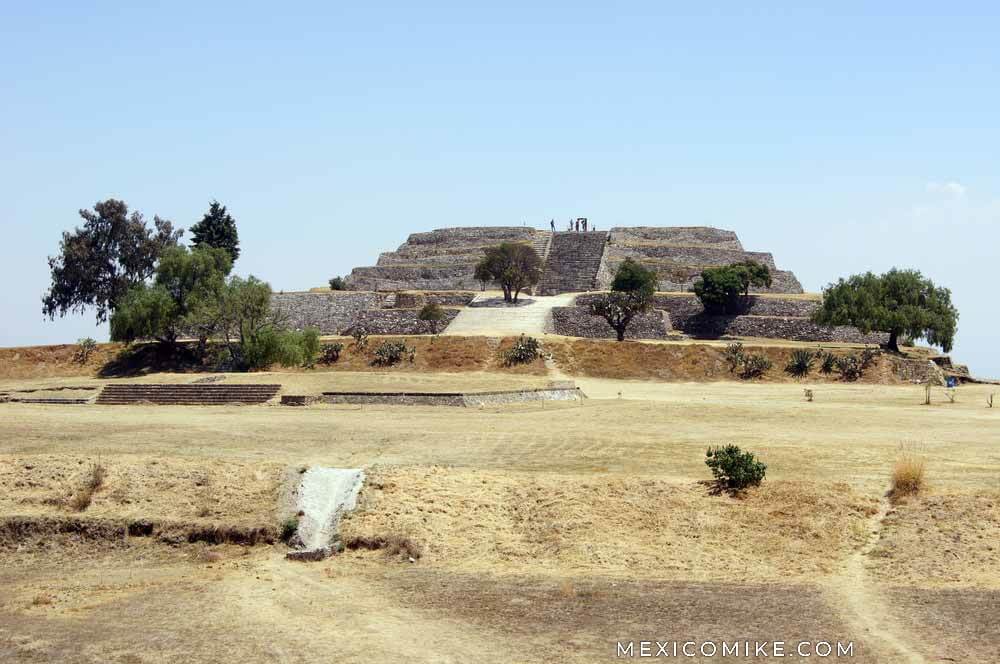
Located in east-central Mexico, the state of Tlaxcala is the nation’s smallest state. While its territory may be small, its reputation among tourists is growing bigger each year; the state is home to various historical and natural sites that draw many visitors. Tlaxcala is a landlocked state that borders the Mexican states of Puebla, Mexico, and Hidalgo. While the state boasts many cultural attractions, it is best known for its archeological sites that demonstrate its rich pre-Columbian past as well as the colonial era.
Important Facts
Tlaxcala has an area of only 1,541 square miles. It boasts a population of 1,193,262 people. The capital of the state is Tlaxcala de Xicohtencatl, but its largest city is Vicente Guerrero. Tlaxcala became a state in 1856, but its historical past stretches back centuries. Although much of the state’s terrain is rugged and mountainous, its main industry is agriculture, but it is also well known for tourism.
Geography
Tlaxcala is located on the Trans-Mexican Volcanic Belt. The Sierra Madre Oriental range dominates its eastern territory. The western part of the state is located on Mexico’s central plateau. Along with its mountainous topography, the state boasts deep valleys and rock formations. La Malinche, the famed volcano, lies in the west and is a major tourist attraction of the region. The state’s highlands are home to forests of fir and pine trees while the flatlands are home to various types of cactus. The state’s geography is part of its memorable scenic attraction.

History
Nomads entered the area of Tlaxcala roughly twelve thousand years ago. As agriculture was developed in the area, the population began to grow and cultural advances took place in the form of larger settlements and ceramic production. The pre-Hispanic cities of the region became known for their temples and pyramids. One of the earliest major civilizations of this region was the Olmec-Xicalanca. Eventually, the region was occupied by Chichicmecas who were supplanted by the Tlaxcalans who founded the present-day capital. The Spanish arrived at a pivotal moment in the region’s history. Thus far, the Tlaxcalans had successfully repelled the powerful Aztecs from dominating their region. When Cortes arrived, the Tlaxcalans allied with the Spanish to conquer Tenochtitlan. Because Tlaxcala had bargained with the Spanish and helped bring down the Aztecs in 1521, they were not decimated as so many other indigenous people had been during the conquest years. While Tlaxcala enjoyed more tolerance from the Spanish than other areas for its way of life and traditions, it was also popular with missionaries and many indigenous people were converted to Catholicism. After the nation won its independence, Tlaxcala was initially made a territory until it finally achieved statehood in 1856. Unlike many Mexican states, Tlaxcala enjoyed a far more peaceful transition to the modern era during all of the political tumults that occurred in the country over the past century. Today, the state is well known for its textiles as well as its tourist industry.

Tourism
The state’s tourism industry is largely based on archeological pre-Columbian sites and colonial attractions. Not all of the state’s thousand archaeological sites are open to the public, but many are still in the excavation process and may open to visitation in time. Visitors enjoy coming to the state during Carnival or for other local festivals. Eco-tourist activities are especially popular in the mountain areas and around the La Malinche Volcano and its surrounding national park. Travelers to Tlaxcala will enjoy the cuisine which is famous for its moles, barbacoa, and tamales.

Tlaxcala de Xicotencatl
The capital is especially known for its colonial landmarks and architecture. Some of the important historic sites of the city include the central plaza and the old Franciscan Monastery that dates to 1542 when it was completed. While there are many historic churches and chapels in the city, there are also much-visited cultural venues like the Tlaxcala Museum of Art and the Xicotencatl Theatre. The capital is noted for its beautifully-colored architecture—mustard and salmon-colored buildings especially around the city center—and great civic pride which is evident in its people and city upkeep.
Important Sites to See and Things to Do in Tlaxcala
Cacaxtla: This major archeological site is located near the southern extremity of the state. Once a large palace complex, the site is noted for its Mayan influence. It’s one of the state’s most popular attractions. Its late excavation allowed for many elements, like wall decorations, to be preserved where they were found, allowing visitors to witness them in their original place.
Xochitecatl: This archaeological site is located near the capital. The site appears to be a ceremonial center for people who lived in the region around 400 A.D. The Pyramid of Flowers is one of its most significant landmarks.
La Malinche National Park: Home to the volcano La Malinche, this national park shares land with the state of Puebla. The volcano rises more then 14,000 feet above sea level. The volcano has been declared inactive—it has not erupted for more than three thousand years. It is a major weekend destination for residents of Mexico City.
Hacienda Tours: Touring the state’s haciendas is popular among tourists or anyone interested in the rich architecture of these old estates. Hacienda tours allow for a glimpse into the agricultural heart of the state and invariably introduce people to the culinary and musical charms of the state.
Altiplano Zoo: Situated on the outskirts of the capital in the nearby city of Apetatitlan, the zoo covers thirteen hectares and is known for its specially designed habitats for its two hundred animal occupants.
Jorge “El Ranchero” Aguilar Bullring: This popular eighteenth-century bullring is revered as an architectural beauty and is one of the state’s most-visited venues.

National Institute of Anthropology and History Regional Museum: This renowned museum and its historic collections are located in the cloister of the Franciscan ex-convent; the building and museum are famous Tlaxcala attractions.
Atlihuetzia: This village is noted for its famed waterfall. Situated with a few miles of the capital, it is a popular destination with revered gardens and a resort.
